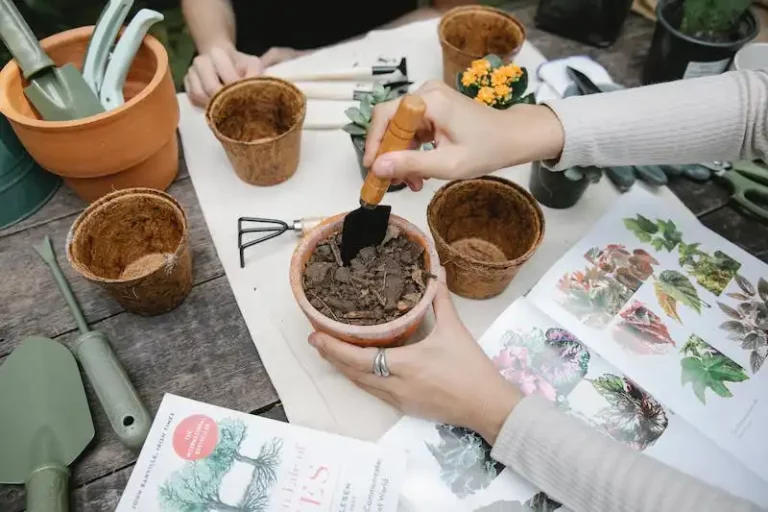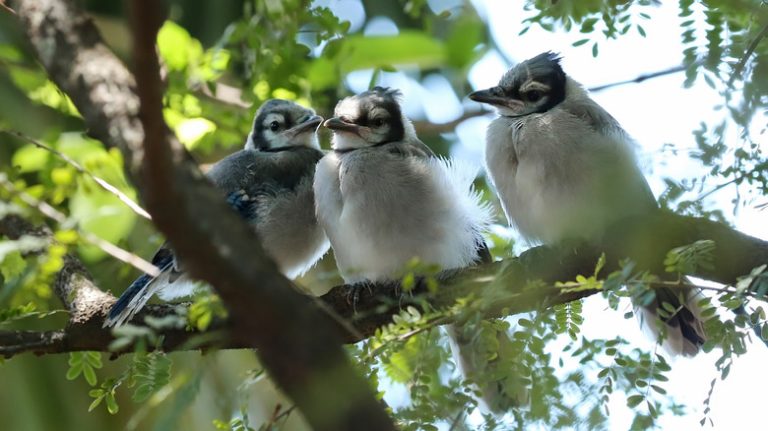Hydrangeas are a beloved flowering plant that can add beauty and charm to any garden or home. However, if your hydrangeas aren’t blooming as they should, it can be frustrating and disappointing. There are several reasons why your hydrangeas may not be producing flowers, but don’t worry – there are also solutions to help you get your blooms back.
One common reason why hydrangeas don’t bloom is improper pruning. If you’re pruning your hydrangeas at the wrong time or cutting off too many branches, you could be preventing them from blooming. It’s important to know how and when to prune your hydrangeas to ensure they have enough time to grow and produce beautiful flowers.
Another reason why your hydrangeas may not be blooming could be related to how you’re watering them. Hydrangeas are plants that love water, but they can also be sensitive to overwatering. It’s important to find the right balance and water your hydrangeas appropriately – not too much, but also not too little. During the growing season, hydrangeas need about an inch of water per week. In winter, though, they’ll need less water because their growth slows down.
If your hydrangeas aren’t blooming, it’s also important to consider the weather and climate in your area. Hydrangeas are hardy plants, but they can be susceptible to freezing temperatures. If your hydrangeas experience a freeze or cold snap, it can damage the buds and prevent them from blooming. To protect your hydrangeas from freezes, you can cover them with a plastic material or move them indoors during the colder months.
There are other factors that can affect the blooming of your hydrangeas, such as soil acidity, lack of sunlight, or pests. It’s important to address these issues and make sure your hydrangeas have the right conditions to thrive. By following the proper care instructions and understanding the needs of your hydrangeas, you can help them bloom beautifully year after year.
Why Doesn’t My Hydrangea Bloom
If you have hydrangea plants in your garden and they aren’t blooming, there could be several reasons for this. It’s important to understand why your hydrangeas don’t have flowers so that you can properly address the issue and encourage blooming.
One reason your hydrangea isn’t blooming is that it may have recently been pruned. Hydrangeas typically bloom on old wood, so if you pruned them at the wrong time, you may have inadvertently removed the flower buds. To avoid this problem, make sure to prune your hydrangeas right after they finish flowering.
Another reason your hydrangea isn’t blooming is that it may not be getting enough sunlight. Hydrangeas need at least six hours of direct sunlight per day to produce vibrant blooms. If your hydrangea is located in a shady spot, consider moving it to a sunnier location.
Watering can also affect blooming. Hydrangeas need consistent moisture, especially during dry spells. However, too much watering can lead to lush foliage but few flowers. Make sure to water your hydrangeas regularly, but avoid overwatering.
The type of hydrangea you have can also play a role in blooming. Some hydrangea varieties bloom on old wood, while others bloom on new wood. If you aren’t sure what type of hydrangea you have, consult a gardening guide or do some research online to learn more about its specific blooming habits.
If your hydrangea isn’t blooming, it may be lacking certain nutrients. Hydrangeas are heavy feeders and require regular fertilization. A balanced fertilizer with a nitrogen, phosphorus, and potassium ratio of 10-10-10 is generally recommended. Apply the fertilizer according to the instructions on the package.
Another factor that may prevent your hydrangeas from blooming is winter damage. Hydrangea buds can be sensitive to cold temperatures, especially in areas where the weather frequently freezes. To protect your hydrangeas from winter damage, consider covering them with burlap or providing some other form of insulation.
Lastly, if you have deer in your area, they may be eating the flower buds of your hydrangeas. Deer are known to enjoy the taste of hydrangea buds, so if you have a deer problem, you may want to consider installing a fence or using deer repellents.
In summary, if your hydrangea isn’t blooming, consider the factors mentioned above. Reconsider your pruning schedule, make sure your hydrangea is getting enough sunlight and water, fertilize it regularly, protect it from winter damage, and address any deer-related issues. By addressing these factors, you can hopefully enjoy the gorgeous blooms your hydrangea plants have to offer.
What to Do If Your Hydrangeas Aren’t Blooming
If your hydrangeas aren’t blooming, don’t worry. There are several potential reasons why your hydrangeas may not be producing those beautiful blooms you were expecting. In this article, we will discuss some common issues and provide solutions to help your hydrangeas start blooming again.
1. Species and Climate: Not all hydrangea species bloom every year. Some only bloom once a year, while others may bloom multiple times during the season. Additionally, different species have different bloom shades. Before panicking, figure out which type of hydrangeas you have and learn how often and in what climate they typically bloom.
2. Light and Water: Hydrangeas need plenty of light to bloom. If your plants aren’t receiving enough sunlight, they may struggle to produce blooms. Make sure your hydrangeas are planted in an area that receives at least 4-6 hours of direct sunlight each day. Additionally, hydrangeas require consistent moisture; make sure they are getting enough water, especially during hot summers or dry spells.
3. Pruning: Improper pruning can also prevent hydrangeas from blooming. If you are an enthusiastic pruner, you may unintentionally be removing the buds that will turn into flowers. Make sure you know the correct time and method to prune your specific hydrangea variety to avoid cutting off future blooms.
4. Nutrient Deficiency: Hydrangeas require proper nutrition to bloom. If your soil lacks essential nutrients like phosphorus, potassium, or nitrogen, the plants may not produce flowers. Test your soil and apply the necessary fertilizers or amendments to provide the right nutrients for your hydrangeas.
5. Winter Damage: Extreme cold or frost can damage the flower buds, resulting in little to no blooms in the following season. Protect your hydrangeas from harsh winter conditions by mulching around the base of the plant and covering them if necessary.
6. Disease or Pest Problems: Unhealthy hydrangeas are more susceptible to diseases and pests that can affect blooming. Make sure your plants are free of any pests, and address any diseases promptly to ensure your hydrangeas stay healthy and produce better blooms.
Remember, hydrangeas may take some time to establish themselves and start blooming regularly. Be patient and provide the necessary care, and soon you will be able to enjoy the gorgeous blooms in your garden.
If you still have trouble getting your hydrangeas to bloom, consider consulting with a local florist or a professional gardener for more specific advice. Also, don’t hesitate to browse online communities, gardening forums, and YouTube channels to connect with other gardeners who may have faced a similar problem.
Hydrangeas are a popular choice for both outdoor and indoor décor because of their stunning blooms. Whether you have recently moved into a farmhouse or want to spruce up your home’s interior, hydrangeas can be a perfect addition.
We hope this guide helps you understand why your hydrangeas aren’t blooming and how to fix the problem. With a bit of knowledge and care, you can have beautiful hydrangeas that will enhance your garden or your home’s décor.
Make sure your conditions are just right
When it comes to getting your hydrangeas to bloom, the right conditions are essential. Hydrangeas are a gift, producing beautiful blooms that can brighten up any backyard or garden. But if your hydrangeas aren’t blooming, it’s valuable to take a step back and consider what might be going wrong. Here are a few things to remember and some easy fixes to make sure your hydrangeas are getting everything they need to thrive.
- Planting in the right location: Hydrangeas need a good amount of light to bloom, but they can’t handle too much direct sun–or they may get scorched. Aim for a spot where they will get morning sun and afternoon shade.
- Watering: Hydrangeas are thirsty plants, so it’s important to give them the right amount of water. Typically, a weekly watering is sufficient, but during hot, dry spells, they may need more frequent watering. Just make sure not to overwater, as this can cause the roots to rot.
- Winter care: Hydrangeas are hardy plants, but they still need some care in the winter months. Before the ground freezes, make sure to give your hydrangeas a good watering. This will help them stay hydrated throughout the winter and protect them from cold temperatures.
- Pruning: Pruning hydrangeas can be a bit tricky, as some species bloom on old wood and others on new wood. To be safe, wait until after the plant has finished blooming before pruning. This way, you won’t accidentally remove next year’s blooms.
- Soil quality: Hydrangeas prefer well-draining soil that is rich in organic matter. If your soil is heavy and clay-like, consider amending it with compost or peat moss to improve drainage and provide essential nutrients.
By following these simple guidelines, you can ensure that your hydrangeas have the best chance of blooming. If you’ve tried all of these fixes and your hydrangeas still aren’t blooming, it may be time to connect with a local master gardener or horticulturist for more personalized advice.
Remember, hydrangeas can be a bit finicky, but with a little care and attention, they can become the lush, green showstoppers you’ve always hoped for in your outdoor space. Don’t give up–keep trying and with the right conditions, your hydrangeas will reward you with gorgeous blooms!
Xoxo,
The Farmhouse Gardener

